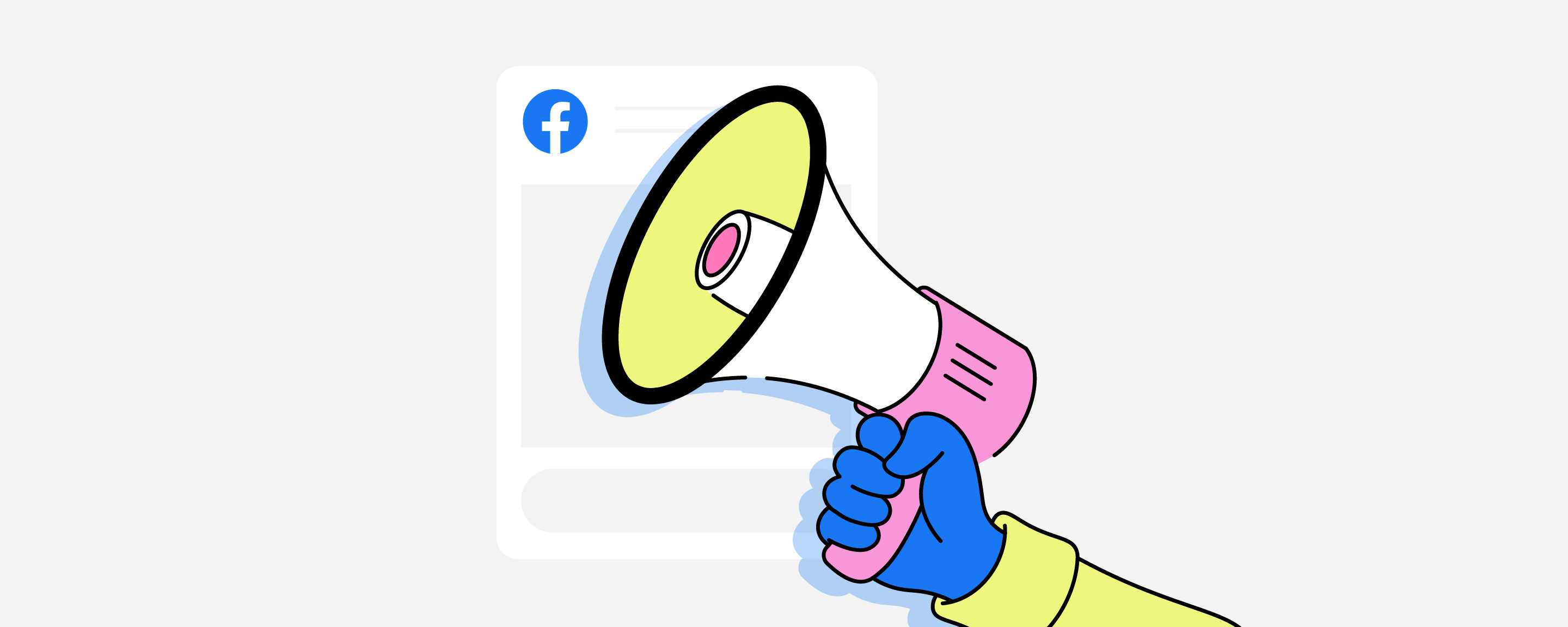Facebook is the world’s largest social networking site, with almost 2.9 billion monthly active users. It’s only natural that entrepreneurs worldwide are wondering how to advertise a business on Facebook.
However, beginner sellers often get overwhelmed when figuring out a new advertising platform. We get it: social media ads can be complicated. That’s why there are almost infinite tips on social media marketing, and the Facebook Help Center has thousands of pages for people to navigate. Understandably, it can be intimidating.
Don’t worry, we are going to help you through the process of advertising on social media. In this post, we will explain how to advertise products on Facebook and set up your first ad campaign.
Why Advertise on Facebook?
The great thing about Facebook advertising is that when you run an ad, it can not only appear on Facebook, but also on Instagram, Audience Network, and Facebook Messenger. With a single campaign, you can reach people on all their favorite platforms.
Facebook is an effective method to promote a small business for many reasons:
- It’s
budget-friendly. Facebook prioritizes ads that perform well and shows them more frequently for cheaper. - It’s
beginner-friendly . Even if you’ve never set up an ad campaign before, you can launch yours in a couple of steps. - It’s effective. Flexible targeting settings allow you to reach potential customers easily.
- It doesn’t take much time. Creating an ad campaign on Facebook will usually take less than 15 minutes.
- It fits different marketing goals. Whether you want to attract new customers or give a special offer to loyal ones, Facebook helps you do it all.
- It can be automated. You don’t have to closely monitor your campaign because most of the work is done automatically.
Okay, now let’s see how all these things work.
Ways to Advertise on Facebook
There are two main ways you can promote your business on Facebook:
Boost Your Posts on Facebook
When you post organic (aka not paid) posts on your Facebook business page, you can see a blue Boost Post button at the bottom of some of your posts:
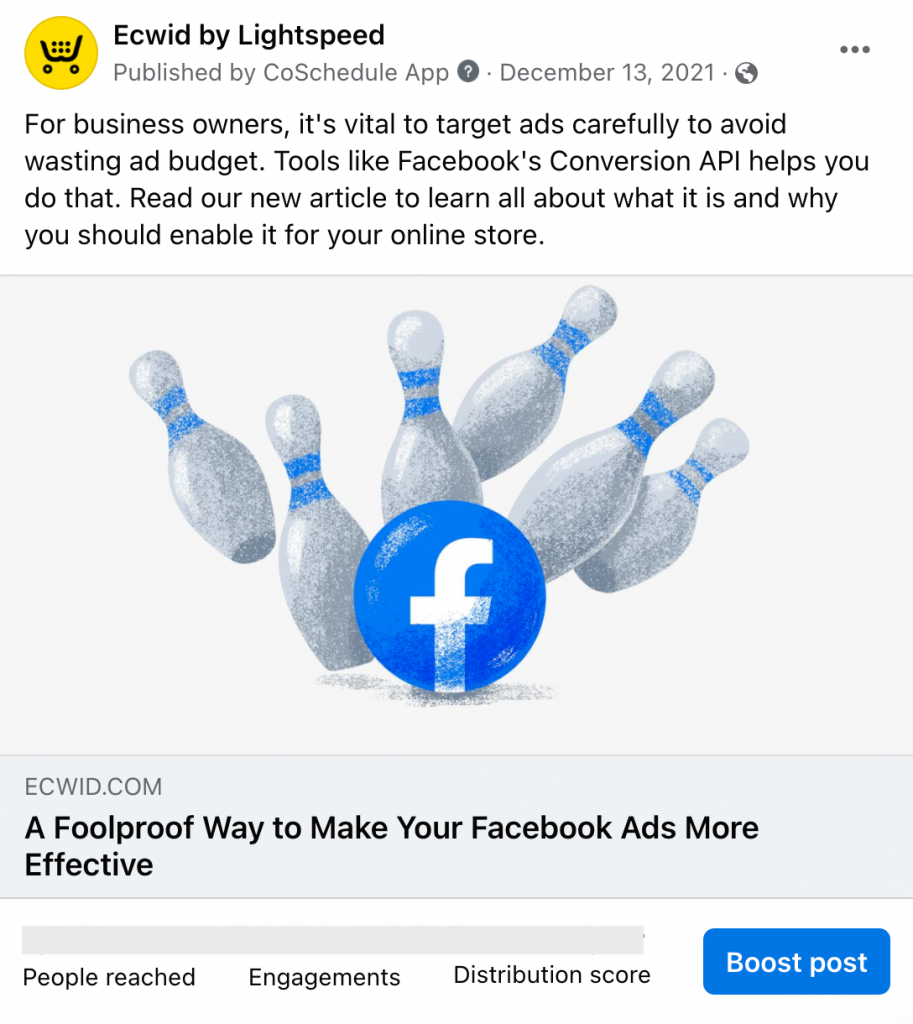
The Boost Post button allows you to quickly create a Facebook ad from one of your existing posts. This ad can appear in different places on Facebook, and you can show it to the people you choose.
Boosting a post is a quick way to share your business with people who might be interested. Promoting your page with boosted posts helps to grow your followers and increase engagement, such as getting more likes or comments.
Run Facebook Ads
While boosting posts can drive engagement and grow your page, running ads on Facebook helps you attract potential customers and encourage people to shop in your online store.
There are different Facebook ad formats you can use:
- Photo ad. It is a simple format that works better with engaging photos and copy.
- Video ad. It allows you to show off your product or brand using a video. The format comes in a range of lengths and styles.
- Ads in Stories. As you could probably guess, this format is used to run ads in Facebook and Instagram stories.
- Messenger ads. Use it to promote your business on Facebook Messenger. You can add interactive elements to it.
- Carousel ads. This format allows you to display up to ten images or videos in a single ad, each with its own link. Great for spotlighting different products.
- Slideshow ads. These are
video-like ads made of motion, sound, and text. They allow you to advertise across various devices and connection speeds. - Collection ads. They display a primary video or image with three smaller images below in a
grid-like layout. A great option that allows customers to browse what you offer.
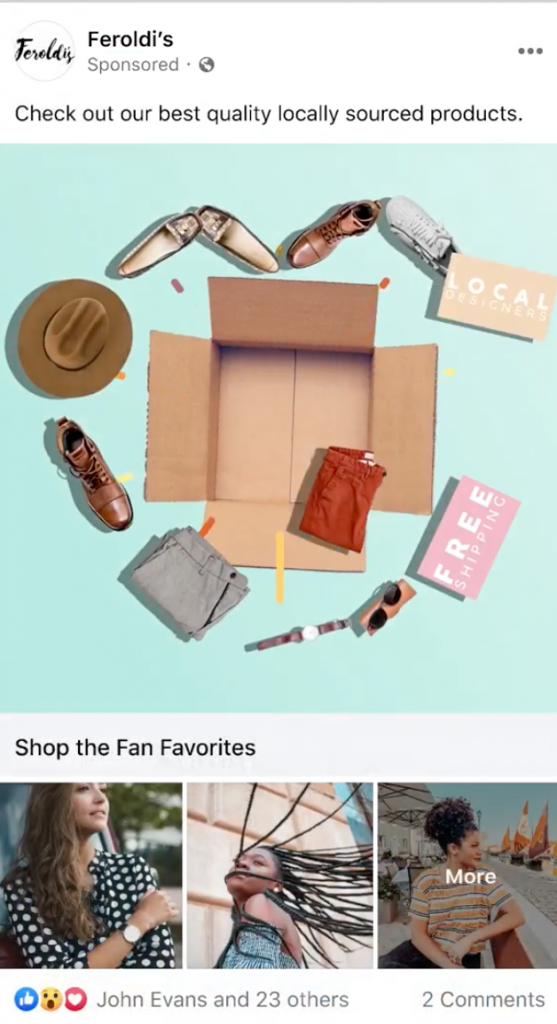
Collection ad on Facebook
Should You Boost Posts or Run Ads?
Not sure how you should promote your business on Facebook? Should you use boosted posts or ads? First, you need to figure out what you want to achieve.
If you want to increase audience engagement on your Facebook business page or improve your brand awareness, consider boosting your posts. It is a great way to gain visibility and grow your audience.
If you have specific business goals in mind, such as getting more website visitors and purchases in your store, it’s better to go with ads.
Ads are also the best choice if you want to create more advanced ad types and campaigns. For example, there are various creative and formatting options available in Ads Manager that aren’t available when boosting a post from your page.
Facebook ads can also provide you with more advanced tools for audience targeting.
When you boost a post, you can choose to place it on Instagram in addition to Facebook news feed. But with Facebook ads, you can choose placements in Facebook newsfeed, Messenger ads, Instagram stories, instant articles, and Audience Network.
Deciding whether to boost a post or run an ad really depends on your goals, but it is an important decision nonetheless.
How Much Does It Cost to Advertise on Facebook?
It’s hard to report the average cost to advertise on Facebook because you have to decide how much you want to spend on your ads. In fact, you can set a limit for each campaign.
Facebook uses an ads auction system. It means that you inform the platform how much you’re willing to pay to have your ad shown to your target audience. Then the platform gets you as many results as possible for that amount.
To make sure you don’t spend more on ads than you planned, you can set up a campaign spending limit and an account spending limit.
A campaign spending limit is a limit on the overall amount your ad campaign can spend. An account spending limit is a lifetime limit on the amount your Facebook ad account can spend across all the ad campaigns you’re running from the time the limit is set.
Prepare for Advertising on Facebook
There are a few things you should consider before putting up your first advertising campaign.
Study Advertising Policies
Did you know that you are not allowed to entice likes in your ads? Or that you can’t use images with weapons pointed at the person who sees the ad? Or that there are restrictions to advertising subscription services?
Before you start coming up with an ad campaign, make sure your business is eligible for advertising on Facebook. Read their advertising policies closely to ensure you can advertise your products or services. Be aware of possible restrictions.
Set Up Facebook Pixel
Facebook Pixel is an analytical tool that helps you understand the actions customers take on your website. For example, how many site visitors saw a certain product page, or added that product to a cart.
Facebook Pixel provides you with data about your customer’s behavior. This is invaluable for creating effective ad campaigns. For example, some people visited a certain product page in your store but left without a purchase. Using Facebook Pixel data, you can create an ad offering a discount on that product and show that ad to those customers only.
There are many ways to use data collected by Facebook Pixel when creating your ads. For example, you can find new audiences to attract. Or, you can measure conversions (points at which your site visitor completes the desired goal) and sales so that you know exactly how your ads are performing.
If you want to run more effective ad campaigns and track their results, it makes sense to set up Facebook Pixel as soon as possible.
With Ecwid, installing Facebook Pixel to your store is as simple as copying and pasting. No tech knowledge required! Here’s how to do that.
If you don’t have an Ecwid store, you can manually set up a Facebook Pixel. You need to be more
Learn more: Facebook Pixel Strategies to Help You Run More Targeted Ads
How to Set Up Your First Facebook Ad
Facebook ads are created in Ads Manager. It is a Facebook tool that lets you create and manage your Facebook ads. It also tells you how your ads perform so that you can adjust your ad campaigns if needed.
If you have never advertised on Facebook before, you should begin to familiarize yourself with the structure of Facebook ads.
Your Facebook ad consists of three parts: a campaign, an ad set, and an ad. Campaigns are made up of ad sets. Ad sets are groups of ads that use the same settings for when, where, and how they will run. And your ads are creative visuals made up of engaging pictures, videos, and text.
At the campaign level, you set your ad objective (for example, driving more people to your website.) At the ad set level, you choose your strategy by setting up targeting, budget and schedule. At the ad level, you choose creative visuals that drive the audience to what you’re trying to promote.
Now, let’s learn how to run a Facebook ad campaign:
Step 1: Create a Campaign
To launch your first ad campaign, go to Ads Manager, find the Ads tab and click Create. You’ll be asked to choose your advertising objective.
To choose the right ad objective, ask yourself: “What’s the most important outcome I want from this ad?” That could be attracting visitors to your website, increasing visits to your physical store, or growing orders in your online store.
In this example, we’ve chosen Reach as an objective. It will maximize the number of people who see our
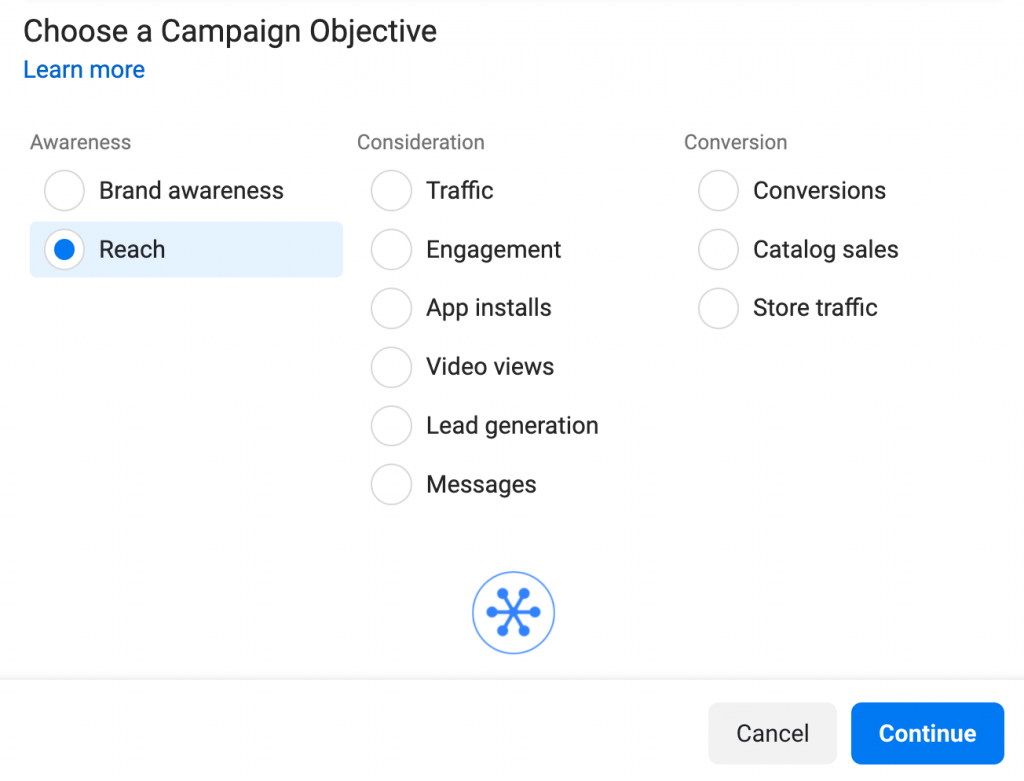
After you choose your objective, you’ll see a page where you can edit the campaign name and declare if your ad is related to special ad categories (credit, employment, housing, social issues, elections, or politics.) As long as you’re making an ad for an online store, you don’t need to declare those categories.
You can also check campaign details and set a campaign spending limit on that page (this is optional):
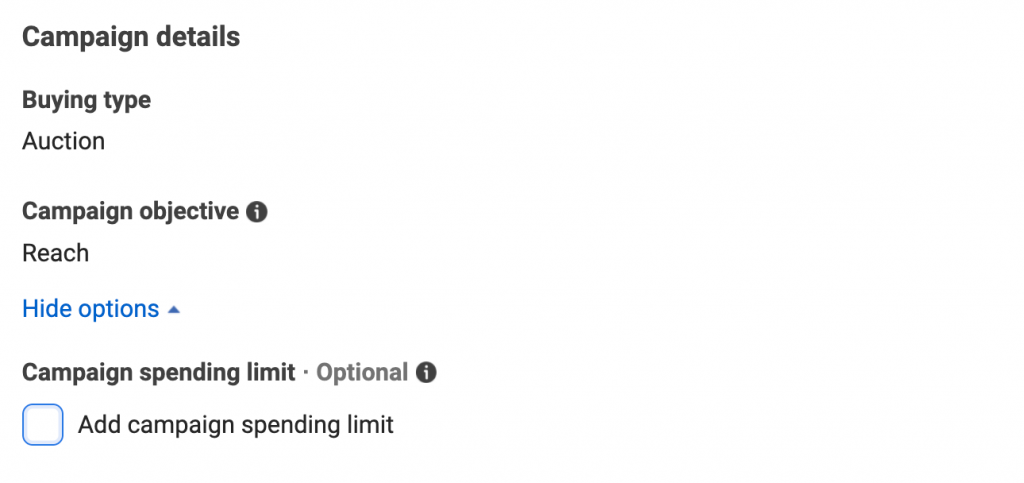
There is also an option to create an A/B test for your ad. This test allows you to try different images, text, and audiences to see which combinations perform best. It’s a helpful tool but unnecessary, especially if this is your first ad.
Turn on the Campaign Budget Optimization if you want to set up a daily budget for your ads:
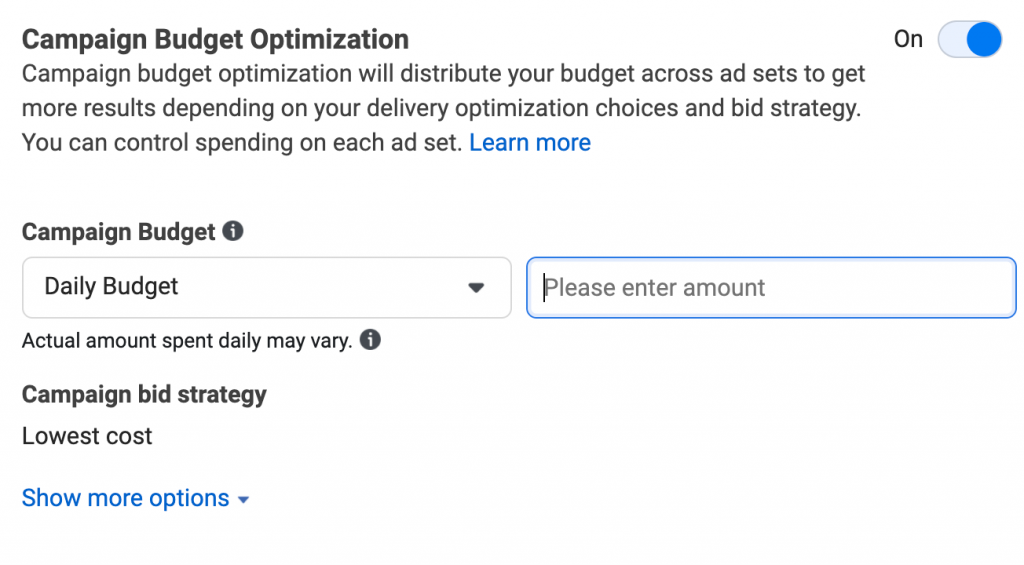
Click Next to proceed to creating your ad set.
Step 2: Create Your Ad Set
Now it’s time to create your ad set. On the next page, enter a name for your ad set and choose the Facebook page you want to promote from the dropdown menu:
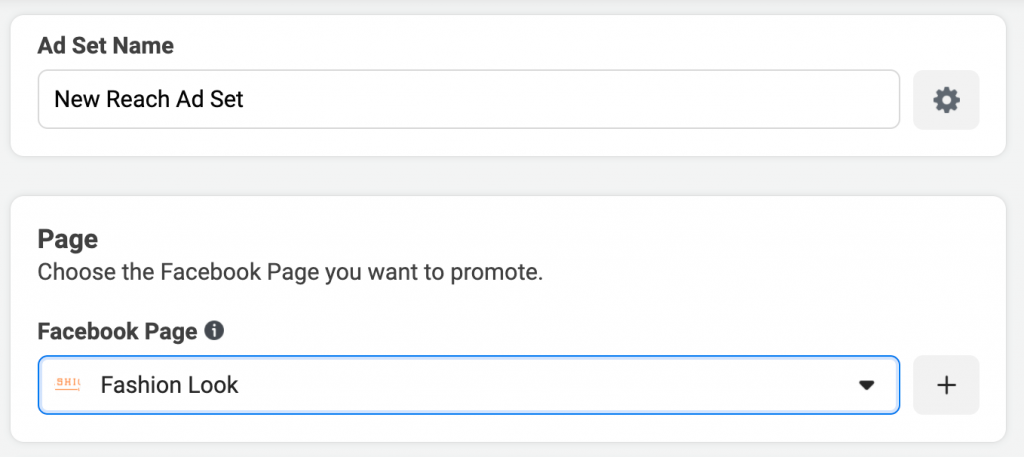
You can turn on the Dynamic creative setting (this is optional). You’ll be asked to provide creative elements, such as images and headlines, and Facebook will automatically mix and match them to generate combinations optimized for your audience.

Step 3: Set Your Budget and Schedule
Find the Budget & schedule section on the page to define your daily or lifetime budget. The daily budget is the average amount you are willing to spend on a specific ad set per day. The lifetime budget is how much you’re willing to spend over the entire
In this section, you can also set up the time period during which you want your ads to run. This way, you don’t keep ads going for longer than they are relevant.
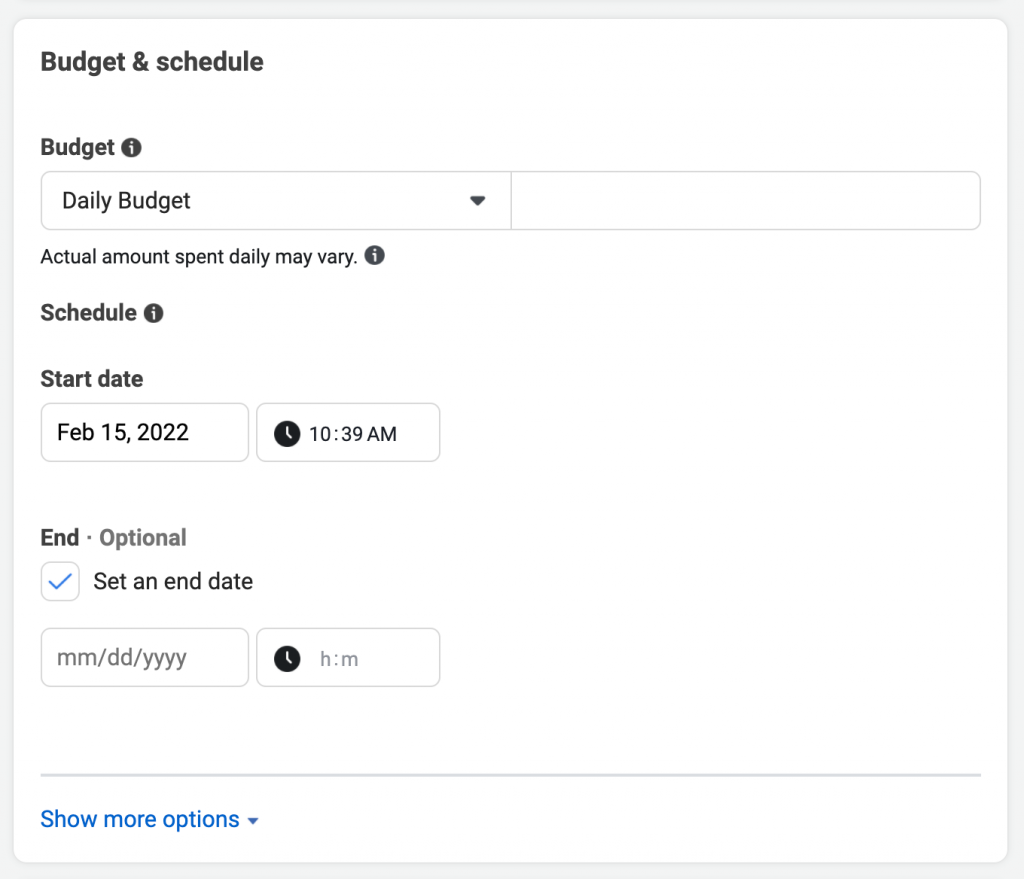
Step 4: Choose Your Audience
Find the Audience section to define who you want to see your ads.
Choose the demographics, interests, and behaviors that best represent your target audience by combining what you know about them. This can include age, location, languages, interests.
In this example, we created an audience of
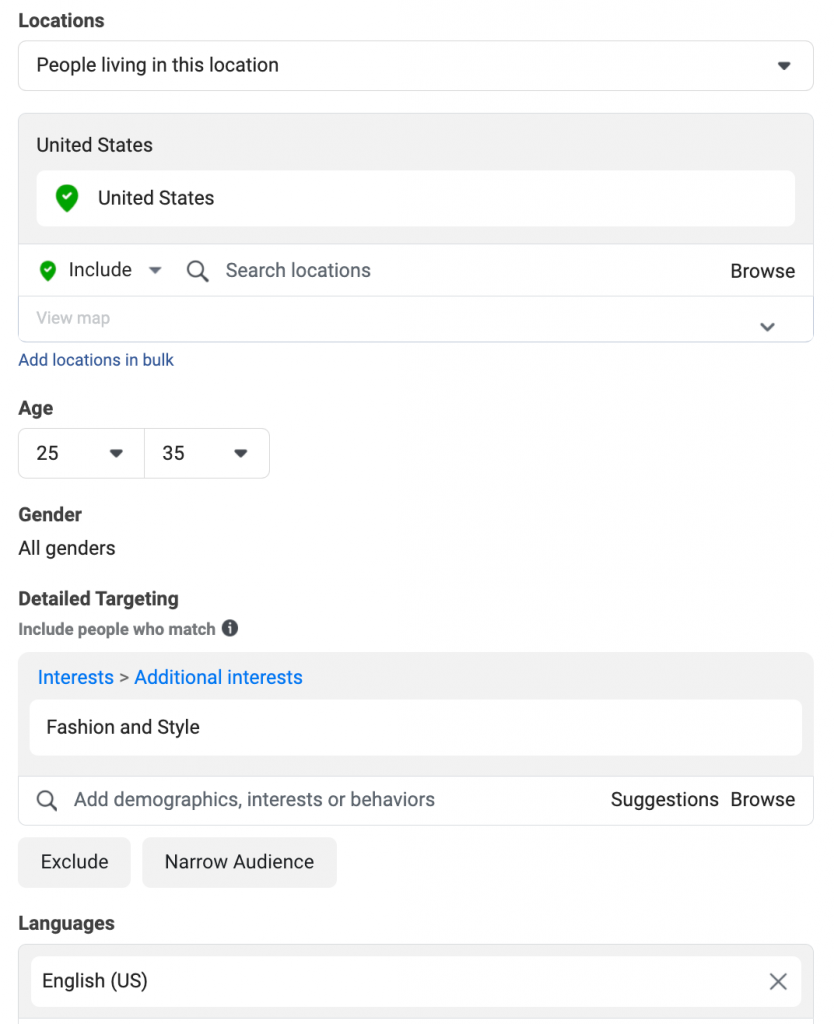
Click Save the audience to use it in your future campaigns.
Step 5: Choose Ad Placements
Simply put, decide where to run your ad. This includes Facebook, Instagram, Messenger, Audience Network, or all of them.
Find the Placements section and choose Automatic or Manual placements. Automatic is recommended as Facebook will allocate your ad set’s budget across multiple placements based on where they’re most likely to perform well.
You can also choose where to show your ad manually. Here you can add or exclude some placements via a simple checkbox:
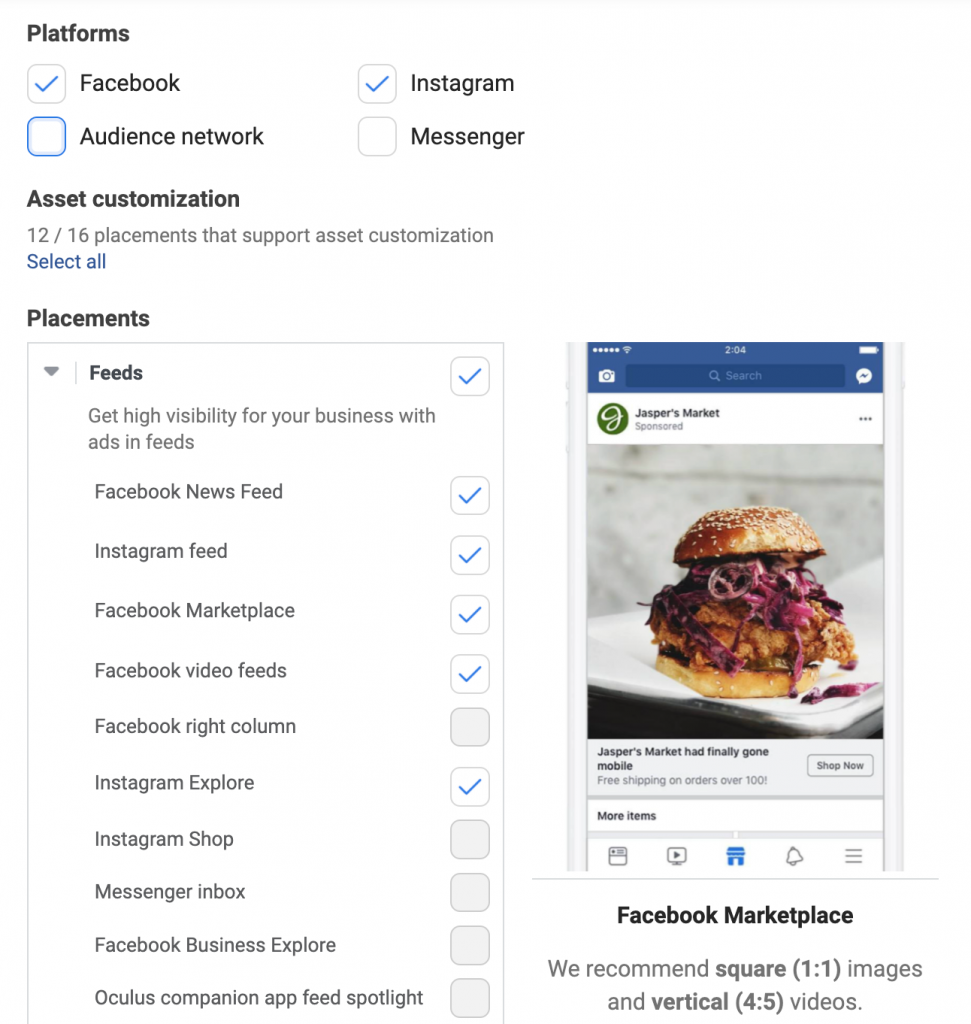
After you finish choosing ad placements, scroll down to the Optimization & delivery section. You can set a cost control if you have a specific spending goal. If you don’t set one, Facebook will spend your entire budget to get the most results.
When you’re done, click Next.
Step 6: Choose Your Ad Format and Ad Creative
We discussed Facebook ad formats a bit earlier, and now it’s time to choose which one you want to use. For example, carousel and collection ads work best if you want to showcase your online store’s product range.
Select images or videos for your ad in the Ad creative section. Enter your ad headline and call to action. Don’t forget a link to your online store!
You can see how your ad will look in different placements in the Preview section on the right:
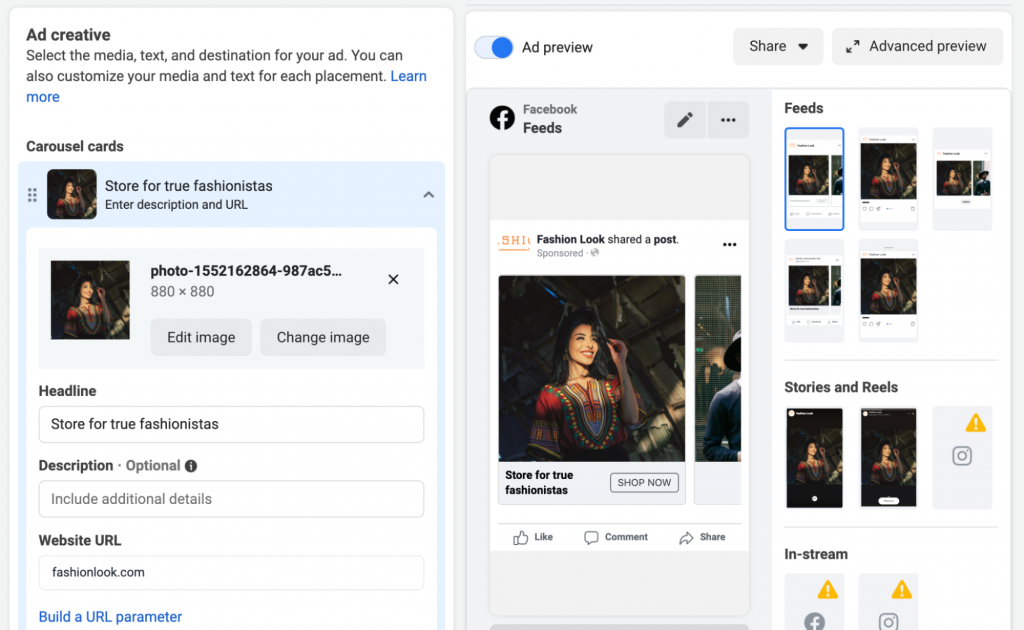
Step 7: Set Up Tracking
Remember we talked about Facebook Pixel earlier? Now it’s time to put it to use!
For this step, Facebook Pixel must be installed in your online store (again, here’s the streamlined process for Ecwid stores, and here’s how to do that manually.)
Find the Tracking section and check the Website Events box (website events are actions that people take on your website):

Step 8: Publish Your Ad
When you’re satisfied with your settings and ad format, click Publish. After you submit your ad, it goes to Facebook’s ad auction to get it to the right audience.
Congratulations, you’ve just launched your first ad campaign on Facebook!
Step 9: Measure Your Campaign Performance
Your advertising adventures are not yet done! Now, you need to track your ad performance in Ads Manager. Check if your ad is being delivered efficiently, and edit your campaign if needed.
We can’t stress enough the importance of measuring your ad performance. Not only does that help you see which ad formats work best for your business, but it also helps you discover more about your target audience and improve your ads over time.
For example, beginners often want to know the best days to advertise on Facebook, or the best time to advertise on Facebook. Unfortunately, articles answering these questions are often oversimplified and potentially misleading. Just because a specific time slot worked for one business doesn’t mean it’ll work for yours.
But you have ways to collect data to get a better understanding of your target audience. You can track sales with Facebook Pixel, set up other analytics tools on your website (like Google Analytics), and look into Audience Insights on Facebook. Better data will allow you to create more effective and
Make the Most of Facebook Ads for Online Stores
We’ve explained above how to create Facebook ads from scratch yourself. Even if you are a business owner who doesn’t have any experience with advertising, you can create a Facebook ad if you put enough time and effort into it.
If you don’t have the time to do everything from scratch yourself, or if anything
Ecwid sellers can create Facebook ads through Kliken, a marketing tool that simplifies the process of purchasing, creating, and targeting your advertising campaigns.
Kliken drastically simplifies ad creation and setup compared to direct setup on Facebook. Your ad campaigns will be automatically optimized. Kliken will also provide you with campaign statistics.
Best of all, you don’t have to create ads featuring your products from scratch. Kliken will use your product catalog information (product titles, descriptions, prices) to make ads that spotlight your products:

Here are some other benefits of running Facebook ads with Kliken:
- Easier than manual ad setup and management. If you don’t have much experience with ads or don’t feel comfortable running ads without any help, Kliken is the tool for you.
- Brings back customers who showed interest in your products. When implementing a Facebook ad campaign, Kliken uses information about previous customer activity, like what products shoppers viewed in your store or added to their cart. They will then show those products to past visitors to bring them back to your store.
- Cheaper than outsourcing. As with most marketing tools, Kliken charges a fee. However, it is much lower than hiring an ad specialist.
Kliken will run your ad campaigns on Facebook and Facebook Audience Network, excluding Instagram and Facebook Messenger.
Follow the instructions from the Help Center to launch your first Facebook ad with ease. Or, watch our video below that explains the process step by step. It also shares tips for running a more effective ad campaign with Kliken.
As you can see, advertising on Facebook is much easier when you’re an Ecwid seller.
If you don’t have an Ecwid store, consider creating one. Apart from simplified Facebook ads setup and management, Ecwid allows you to set up a shop on Facebook and Instagram so that customers can buy your products without leaving their favorite apps.
Many Ecwid sellers benefit from advertising their products via Facebook, so don’t hesitate to test out this ad platform. Here’s what Laraine Craig, an Ecwid seller and the owner of the clothing brand A Little Lacey, says about using Facebook ads:
“Facebook Ads has been one of the main drivers of growth for our business over the last 12 months with increased traffic and sales through ad campaigns.”Laraine Craig, owner of A Little Lacey
Start Advertising on Facebook
Now that you understand a little bit more about how Facebook advertising works, it’s time to put what you learned into practice.
To get started, we suggest creating a few test campaigns and seeing how they perform. Be sure to track your results so you can learn what works for your business. Once you have a good idea of what is successful, and what isn’t, you can start scaling up your advertising efforts.
- How to Advertise a Business on Facebook for Beginners
- What Is Facebook Pixel and How to Use It?
- 5 Ways To Lower Your Facebook Ads CPC
- A Foolproof Way to Make Your Facebook Ads More Effective
- 7 Steps to the Best Ads for Facebook and Google Campaigns
- How to Secure and Handle User Data Responsibly in Facebook Advertising



